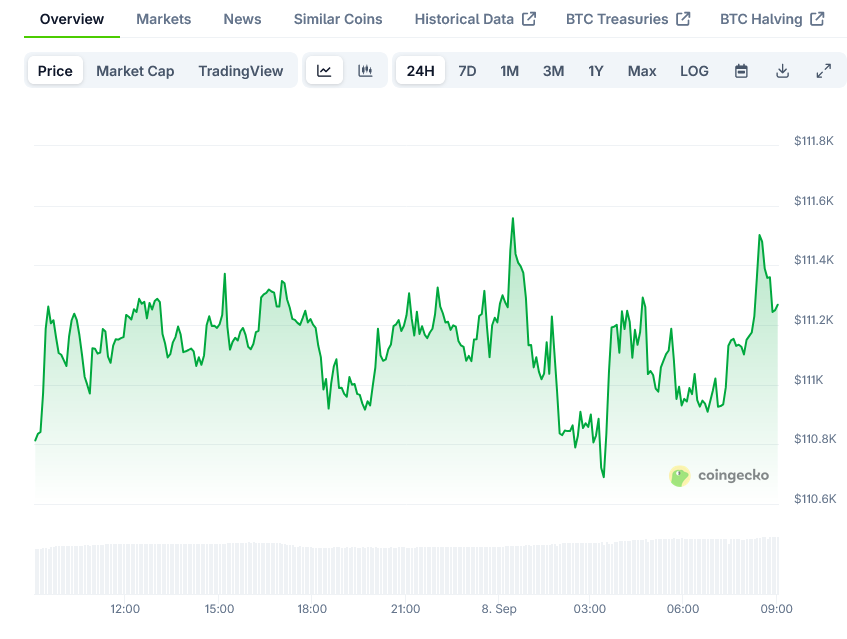Bitcoin has experienced its most significant whale sell-off in over three years, with large holders dumping approximately 115,000 BTC (worth $12.7 billion) over the past month. This massive liquidation has put downward pressure on Bitcoin’s price, keeping it below the $108,000 mark.
The trend of major Bitcoin holders reducing their exposure has intensified throughout August and early September. CryptoQuant analyst “caueconomy” noted that whale reserves have fallen by more than 100,000 Bitcoin in the last 30 days.
This selling activity represents the largest whale sell-off since July 2022. The 30-day change shows 114,920 BTC worth around $12.7 billion at current market prices being moved by these large holders.
The selling pressure has pushed Bitcoin prices below $108,000 and may continue to pressure the cryptocurrency in the coming weeks according to analysts. This has created what some call “intense risk aversion among large investors.”
The seven-day daily change balance reached its highest level since March 2021 on September 3, with more than 95,000 BTC being shifted by whales during that week alone.
Bitcoin has been trading in a tight range between $110,000 and $111,000 over the past three days as the selling pressure has slightly decreased. The weekly balance change has dropped to around 38,000 BTC as of September 6.

Bitcoin entrepreneur David Bailey suggested that prices could surge to $150,000 if two key whales stop selling. The aggressive selling appears to have slowed somewhat in recent days.
For context, CryptoQuant defines whales as holders with balances between 1,000 and 10,000 BTC. Their movements often have outsized effects on the market.
While whale sell-offs have triggered short-term volatility, institutional accumulation has provided some structural counterbalance to the market. Nick Ruck, director at LVRG Research, explained that many institutions added more BTC during this same period.
This divergence suggests that while whale activity may cap near-term price momentum, the market’s underlying resilience remains intact due to corporate buying and ETF-driven demand.
A year ago today, the #btc 1 year moving average sat at 52K. It now sits at 94k. Next month, it will be through 100k.
pic.twitter.com/vEZLhYd6To
— dave the wave
(@davthewave) September 7, 2025
Traders are monitoring whether institutional dip-buying will outweigh the whale-driven pressure. The Federal Reserve’s September rate decision could ultimately dictate broader market direction.
Bitcoin closed August 6.5% lower from its $115,778 opening price, ending a four-month streak of gains. This marks Bitcoin’s worst monthly close since the “Liberation Day” FUD (Fear, Uncertainty, and Doubt).
From a technical perspective, Bitcoin’s support remains somewhat fragile. Since July, BTC has settled each monthly close below $110,000, failing to hold against breakdown pressure.
Despite reaching fresh all-time highs around $123,000 in July and challenging that level again in August, there was no sustained follow-through in price action.
The longer-term picture looks healthier for Bitcoin. The cryptocurrency has only corrected 13% from its mid-August all-time high, which is much less severe than previous market pullbacks.
Analyst “Dave the wave” observed that Bitcoin’s one-year moving average is now at $94,000, up from $52,000 a year ago. He projects this average will exceed $100,000 next month.
Bitcoin’s current price action suggests that smart money isn’t chasing tops, which increases the odds that BTC might skip a clean price discovery move in September, unless the Federal Reserve implements monetary easing measures.
With the next Federal Open Market Committee (FOMC) meeting just 10 days away, investors are closely watching for signals that could impact Bitcoin’s price trajectory in the coming weeks.
The post Bitcoin (BTC) Price: Whales Sell 115,000 BTC in Largest Selloff Since 2022 appeared first on Blockonomi.
Also read: Tether CEO Confirms No Bitcoin Sell-off, Explains 19,800 BTC Transfer to XXI